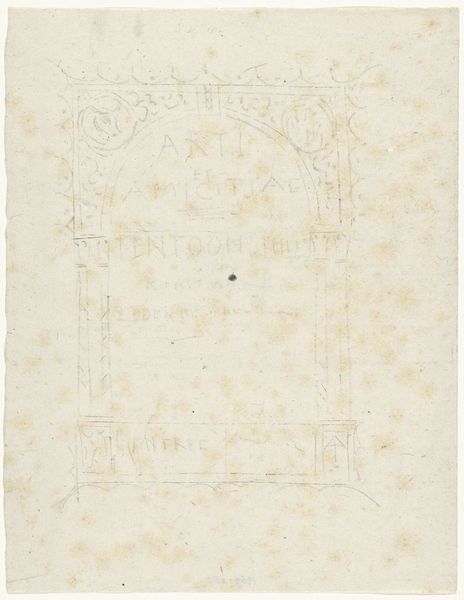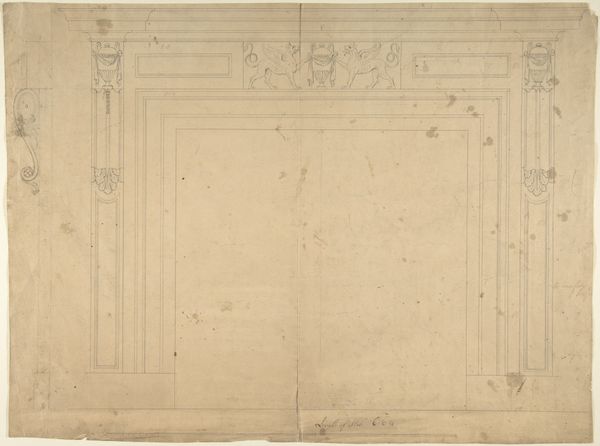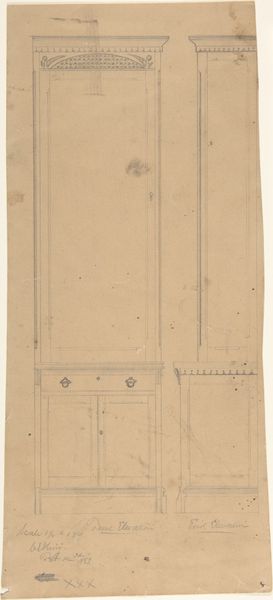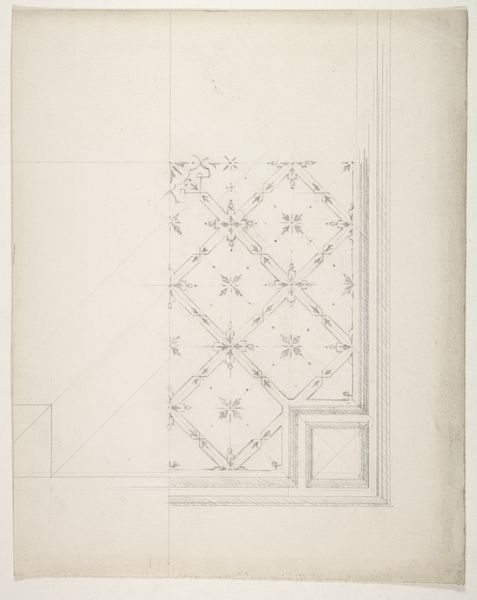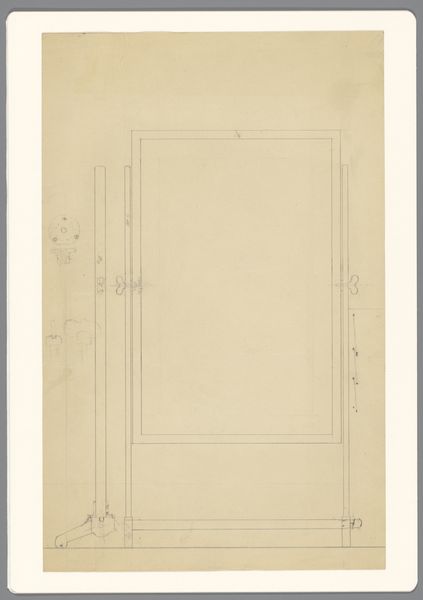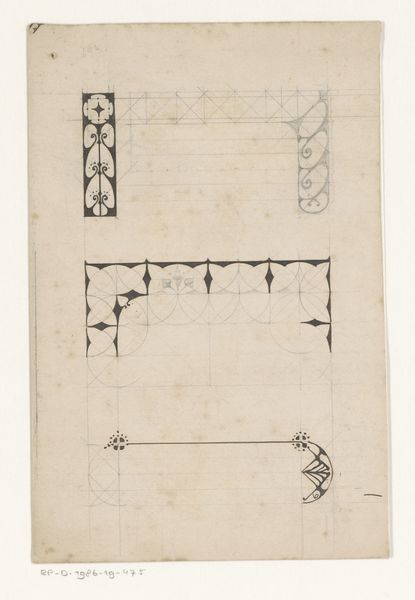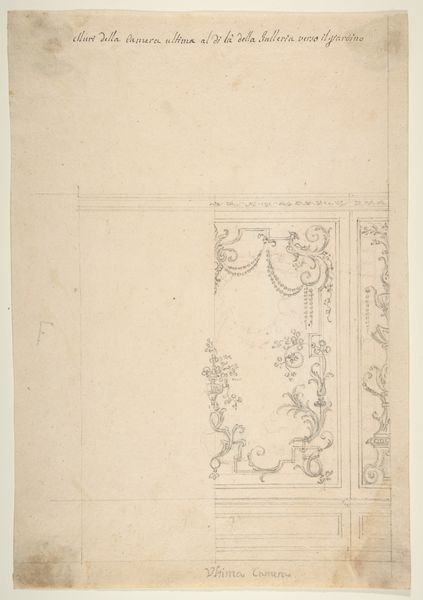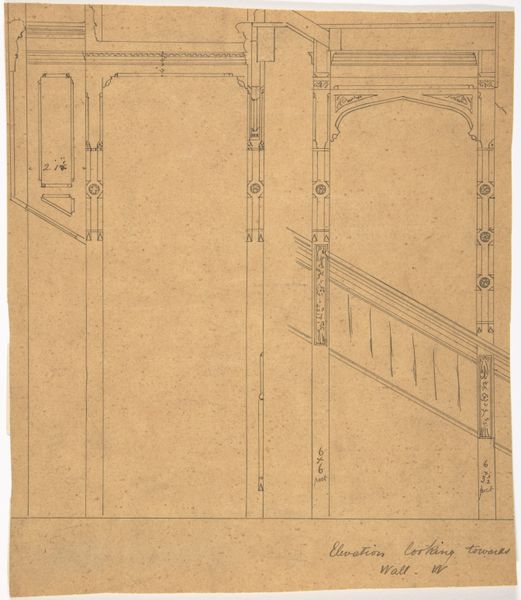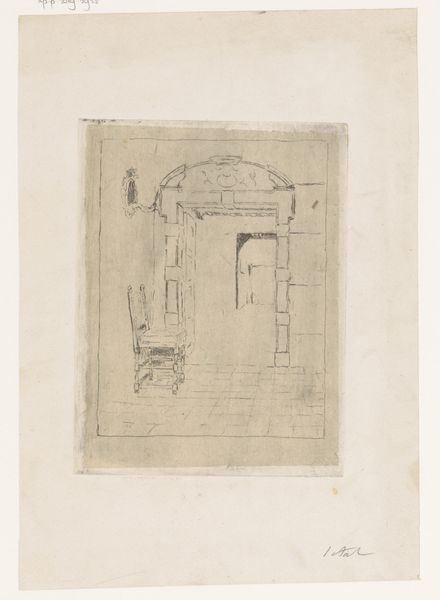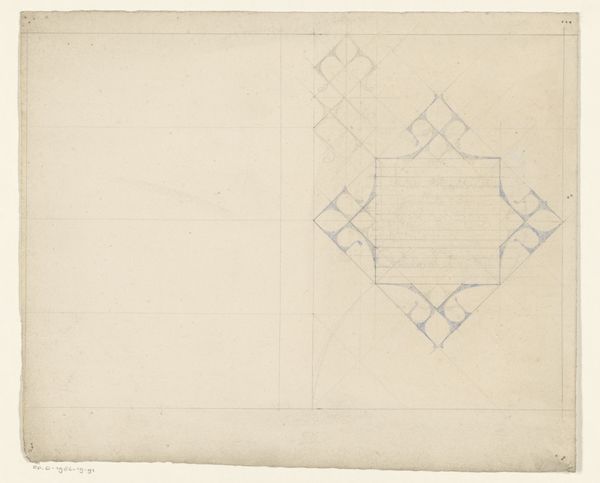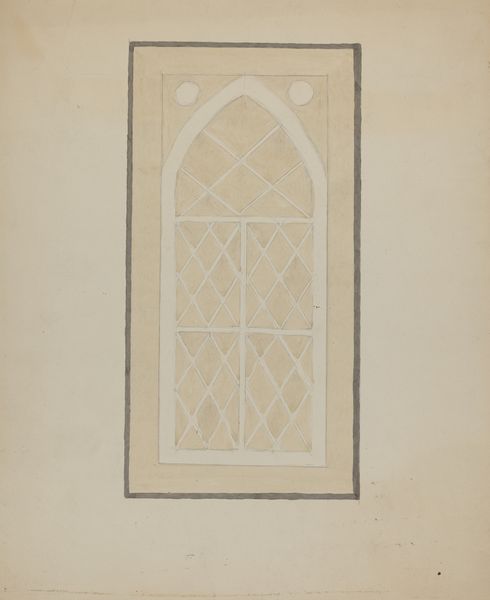
drawing, paper, pencil
#
drawing
#
paper
#
geometric
#
pencil
#
line
#
academic-art
#
watercolor
Dimensions: height 340 mm, width 408 mm
Copyright: Rijks Museum: Open Domain
Curator: Let's take a look at Jan Hoynck van Papendrecht's "Plafond van een zaal," which roughly translates to "Ceiling of a Hall." The work on paper, rendered in pencil and perhaps a touch of watercolor, dates from between 1868 and 1933. Editor: The first thing that strikes me is how faint it is—almost ephemeral. It gives the impression of a fleeting idea captured delicately on paper. Curator: That's an astute observation. Notice the precise lines; you can practically feel the labor involved in constructing this vision. The geometric shapes suggest a planned architectural feature, a physical manifestation of power or prestige through constructed space. What does it tell us about labor practices and material availability? It prompts one to question if this level of ornamentation reflects widespread prosperity, or instead masked underlying social inequalities? Editor: Indeed. The central rosette, that focal point within the octagonal shape, suggests something deeper. Historically, rosettes often represent secrecy or a gathering of energy—a concentrated space for thought or perhaps even ritual. This location, drawn in such detail, points to it possessing strong psychological significance. Curator: Precisely! It speaks to how artistic choices about representing geometric form in functional art is always determined by constraints imposed by the available technology of production. It makes us reflect on the status afforded artists as members of a larger industrial complex. Editor: I am particularly drawn to that centralized symbol and find it difficult not to look for echoes of ancient symbolic forms that remain deeply embedded in the human psyche. This intersection of design and the psychological realm, underscores how art can become a repository of meaning. Curator: Ultimately, this drawing becomes more than a mere plan for architectural embellishment. It is a record, not only of a particular design but a moment within a history of material engagement. Editor: And by examining these formal structures, it lets us unearth how artistic creation echoes through human cultural and unconscious patterns. Thank you.
Comments
No comments
Be the first to comment and join the conversation on the ultimate creative platform.

